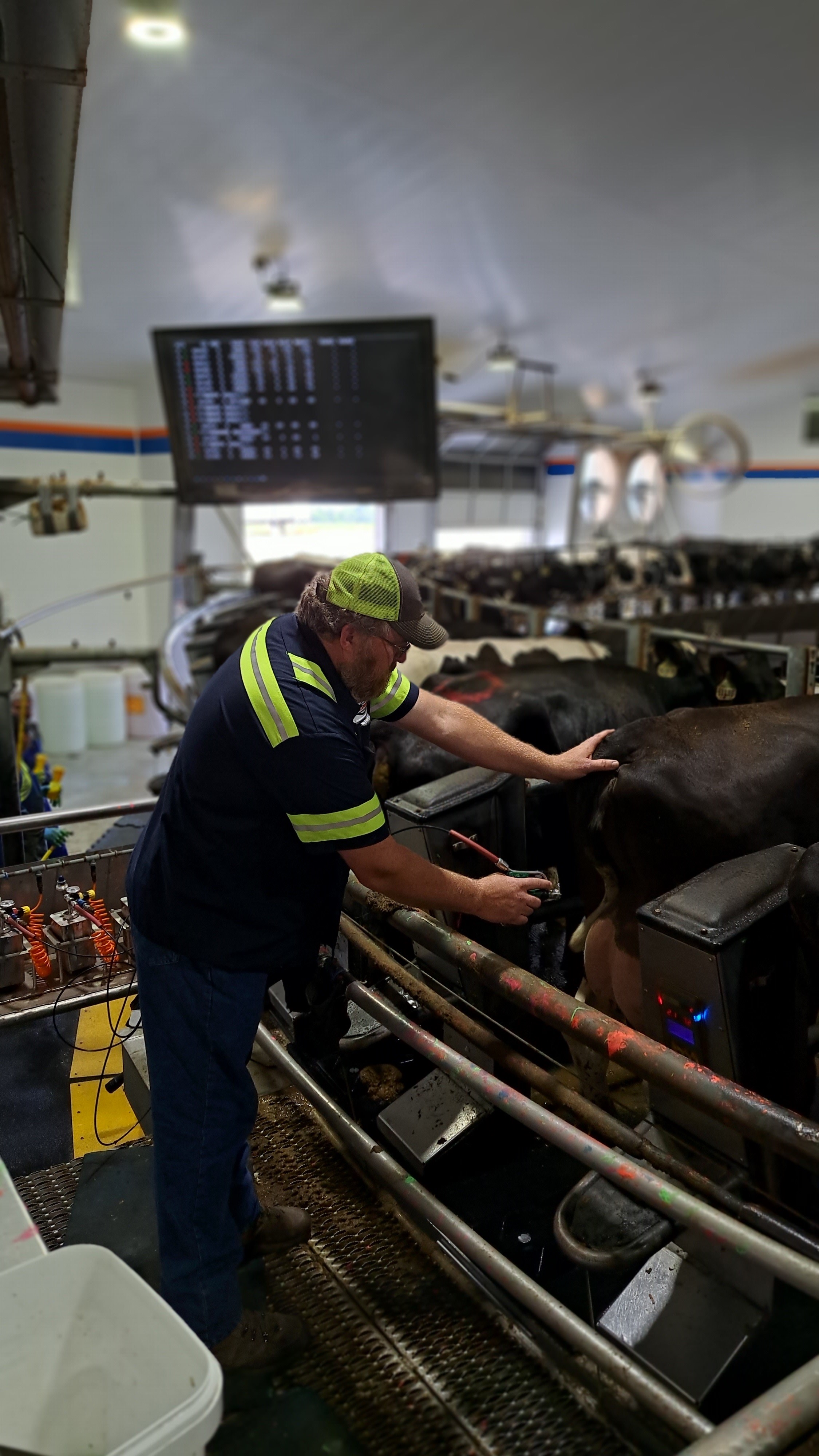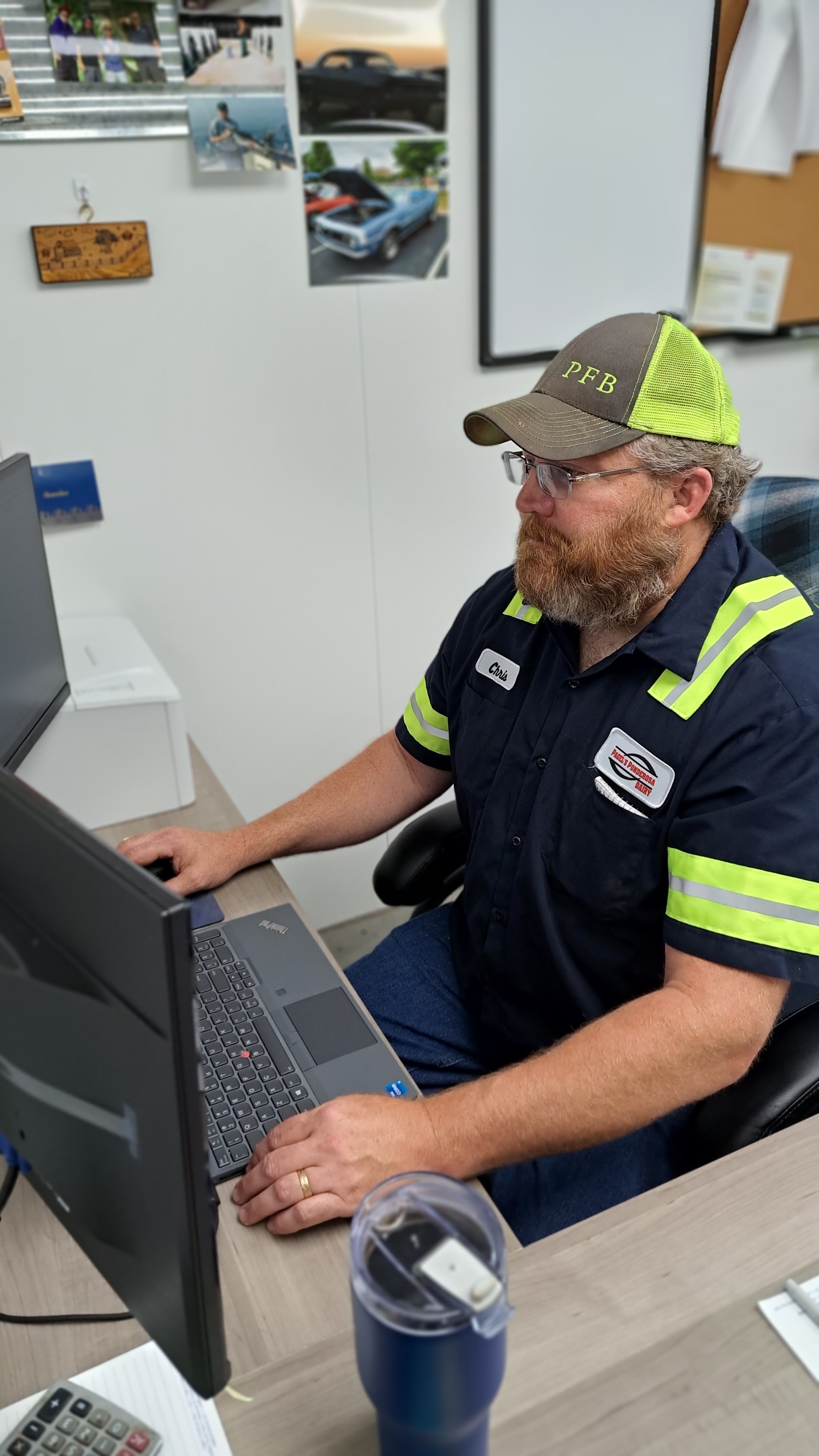
Technology and efficiency seem to go hand in hand. This is what Chris Szydel of Kewaunee, Wis. says, as he shares how incorporating technology into his role as herd manager has been a game changer that has upped the overall efficiency at Wisconsin’s largest family-owned dairy.
“It is just like a light switch,” he notes, sharing that he first performed his role with a clipboard and reports printed off of Dairy Comp and manually doing everything.
Szydel joined Pagel’s Ponderosa as a nighttime milking technician in 1995. A decade later, he was promoted to herd manager and now manages both the Pagel Ponderosa and Hilltop Farm dairies, overseeing three different parlors and 65 employees. His role has evolved tenfold.
Cadillac System
“My best analogy is going from a horse and buggy to getting into a new Cadillac,” he explains.
The Cadillac systems that Szydel is referring to is the Parlor Boss and SCR working together in their rotary, which allows Szydel and his team to now perform herd management tasks while cows are milking, reducing lockup times.

“We went from 5-6 hours a day on headlock time for the herd to 4 -5 hours per week lock up time,” he says sharing the SCR system pulls data from the cows collars, forwards it to DairyComp that then will relay it to the Parlor Boss screen. “All the tasks we need to take care of for the cows show up on the screen. The cows are being taken care of without disrupting them, it is a low stress environment.”
Szydel shares that SCR has also significantly helped them reduce antibiotic and hormone cost on the dairies.
“It does a great job of identifying cows early and we can give them attention sooner. With this technology, we can better identify the animals and have the compliance to double check to make sure that the cow got the attention that she needed,” he adds.
Conducting all their vaccinations and hormone medicine on the rotary, Szydel explains if a cow needs more attention, they can use sort gates to separate her for an exam.
“Everybody else can then go from the parlor back to the pen,” he says, explaining even on small breeding days, they can sort off cows into a small pen and breed and not disrupt the whole group of cows. “The cows are more comfortable in the pens after milking. The sort gates also allow us to breed cow 2x a day, separating the ones we need. We can breed the cow within 5 to 10 minutes and then open up the gate and allow her right back into traffic.”
Investing in technology like Dairy Boss and SCR has also changed the workload amongst all Pagel’s employees.
“My biggest challenge over the last year and a half with the sort gates, Parlor Boss and SCR is keeping my team productive. We have saved time with this technology, so I have had to restructure what we’re doing,” he says.
Dialing in on efficiency across the entire dairy, Szydel and his team have taken on maintenance work during their downtime.
“We’re doing things with our team to help out other departments to help fill the gap,” he says. “We don’t want to let anybody go because the farms are expanding, and we have great people. We are just restructuring a bit.”
Cool Cow Boost
Turning fans on and rolling curtains up used to occupy a lot of time for Szydel. He shares that incorporating a temperature control system in the barns and parlor was a huge time saver, as well as a boost for production.
“I can control the temps in the parlor and the holding area from my cell phone or laptop and this gives the cows the best environment,” he says.
Szydel shares that the herd’s production hovers around 90-92 lbs. of fluid, 106 lbs. energy corrected.
“We would drop probably 8 to 10 lbs. of milk in the summer because of the warm weather,” he states, sharing repro also saw a boost.
“Our pregnancy rate is holding between 37 and 39% and we are able to not only get cows pregnant, but keep them pregnant, too,” he adds.
Worth the Investment
Additional cost-effective technology that Szydel says has been worth the investment includes:
- Pulse NeedleFree System is a lightweight, disposable needle-free injector. “We want to make sure that we don’t have the blood-borne pathogens switching from cow to cow and it takes a lot of time and effort to switch needles,” he says. “Headlocks are no longer needed for routine management treatments.”
- Cattle-Care is a dairy management software that uses existing parlor cameras and artificial intelligence to generate automated protocol reports. “We can reduce deviation in our protocols and having this technology lets us know the consistencies of the protocols and our shifts.”
Five Most Used Apps
Szydel says his role as herd manager has him in front of a computer 50% of the time. He shares his four most used apps include:
- Valley Ag Software
- Dairy Boss
- Teams Folders
- Cattle Care camera system
- SCR
Szydel points out their Cainthus system monitors the feed that is in front of the pre-fresh cows, making sure bunks are full, as a dairy technology must have.
“If we get some areas where the cows are eating more, or eating less, we can talk to our feeders and have them drop more or less feed in those areas,” he says. “It also sends alerts to the feeder’s phones if the cows look to run out of feed, letting them know to feed this group first.”
With so much technology to choose from, Szydel says ultimately what he is selecting for is cost-effective technology that will improve the overall efficiency of the dairy.

“Otherwise, all this technology adds up, so we got to make sure that we’re spending the money in the right areas and that we can get the results from it,” he says.


















